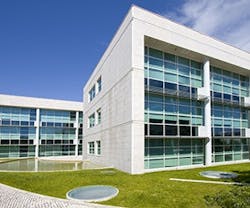U.S. Industrial Property Expansion Continues to Hit Record Highs
Global real estate services firm Cushman & Wakefield just announced that the U.S. industrial market absorbed 63.6 million square feet (MSF) of space in the final quarter (Q4) of 2016, which propelled net absorption for the year to a record-setting 282.9 MSF.
The current industrial expansion is one for the record book, says Cushman & Wakefield. As of January 2017, the industrial sector has registered 27 consecutive quarters of net occupancy gains, placing this expansion among the longest ever. It is also among the strongest, with net absorption for the past three years (825.5 MSF) surpassing the strongest period of occupancy growth in the prior cycle, 726.8 MSF from 1997-1999.
"When consumers are confident the industrial market benefits, and consumers ended the year upbeat with multiple measures of consumer confidence reaching cyclical highs," says Jason Tolliver, Head of Industrial Research for the Americas. "Considering that consumer spending is a dominant driver of industrial demand, an optimistic U.S. consumer will be a boon to industrial leasing. It’s also worth noting that other important industrial-related indicators, such as containerized traffic flows, manufacturing indices, and business inventories demonstrate that the industrial market remains on a promising path."
On the development front, 232.9 MSF of industrial product was delivered in 2016, with 73.6 MSF of it coming online in the fourth quarter. Typically such a robust development pipeline would rebalance supply and demand fundamentals and elevate vacancy, but these are not typical times. E-commerce continues to structurally alter supply chains and drive robust levels of leasing that continue to keep pace with deliveries.
Currently, there is 215.6 MSF of industrial product under construction. Although development remains strongest in major industrial markets, port cities and primary inland distribution hubs, nearly half of the U.S. markets currently have over 1 MSF under construction.
In Q4 2016, the top 10 strongest markets in terms of demand for industrial space were Dallas/Ft. Worth, with 5.3 MSF of net absorption; Chicago, with 4.1 MSF; Houston, with 4.1 MSF; the Inland Empire, with 3.6 MSF; Atlanta, with 3.5 MSF; Memphis, with 3.0 MSF; Stockton/Tracy, with 2.5 MSF; Nashville, with 2.5 MSF; the Pennsylvania I-81/I-78 Distribution Corridor, with 2.3 MSF; and Columbus, with 2.1 MSF.
Among the tightest markets in terms of overall vacancy were Los Angeles, at 1.4%; Orange County, at 2.0%; East Bay/Oakland, at 2.9%; Nashville, at 2.9%; Indianapolis, at 3.0%; Savannah, at 3.0%; Santa Clara County/San Jose, at 3.3%; Stockton/Tracy, at 3.4%; Charlotte, at 3.6%; and Seattle, at 3.8%.
